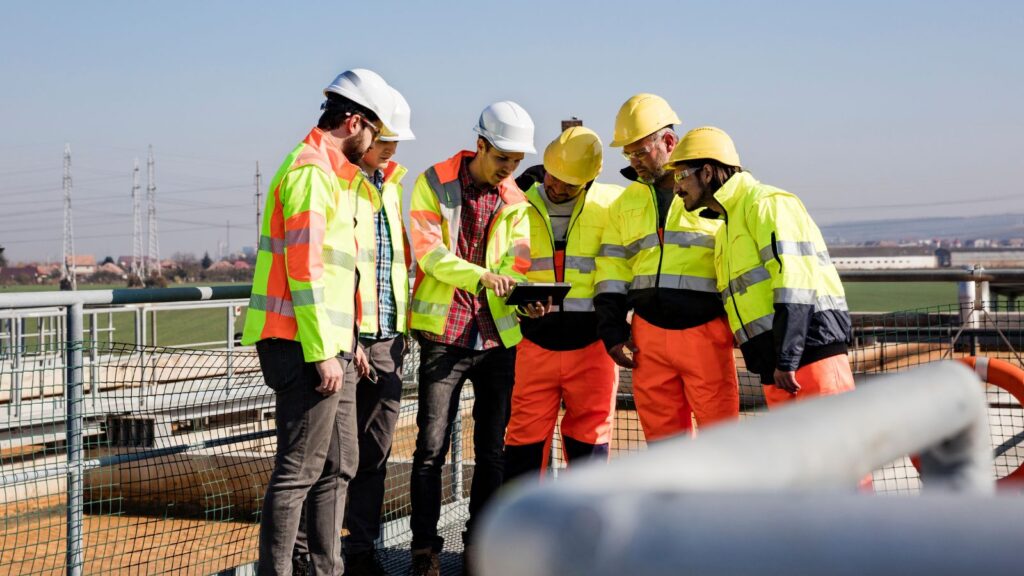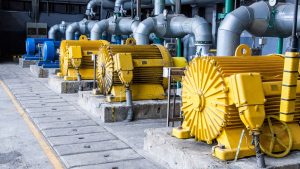Since they have foreseen the possibility of prospective droughts that would affect the well-being of their people, the Australian government is putting full-scale stress on wastewater treatment operations to fulfil water requirements in the future.
Did you know that Australia reuses 19% of water and it has become the number one country in recycled water projects such as wastewater treatments?
This is why Australia needs the latest and cutting-edge technology in order to ensure a smooth wastewater treatment process throughout the year.
The Compressed Air Support System is one such technological advancement that has been designed to optimise wastewater proceedings and in this article, we will have a deep look into it to gain more knowledge.
In this article, we will discover
- What is a Compressed Air Support System?
- Main Benefits of Utilising Compressed Air Support System for Wastewater Treatment Operations
What is a Compressed Air Support System?

-
- A Compressed Air Support system is a critical component used in various industries, including wastewater treatment and it includes employing compressed air as a multipurpose tool to help with several crucial procedures.
- This system mainly helps with aeration, which is the process of adding compressed air to water to encourage microbial development and the breakdown of organic contaminants in wastewater treatment.
- Plus, It ensures sufficient dissolved oxygen levels required for microbial activity by promoting oxygenation by diffusing air into water.
- Also, it helps with the agitation, mixing, and biofiltering processes in treatment tanks, which optimises the environment for effective pollutant removal.
- Ultimately, the Compressed Air Support system plays a major role in enhancing the effectiveness and efficiency of wastewater treatment procedures.
Main Benefits of Utilising Compressed Air Support System for Wastewater Treatment Operations

Efficient Aeration
The Compressed Air Support System plays an important role in efficient aeration for wastewater treatment by providing a controlled supply of air bubbles into the treatment tanks and this process helps the growth of aerobic microorganisms that metabolise and break down organic pollutants effectively.
The controlled release of compressed air ensures uniform oxygen dispersion throughout the water, which optimises dissolved oxygen levels that are crucial for microbial activity.
The power of this does not end there! We can see that it creates turbulence, enhancing contact between air and water, and accelerating the transfer of gases required for biological processes.
This methodical aeration not only fosters microbial growth but also minimises energy consumption compared to alternative aeration methods, ensuring cost-effectiveness and sustainable operation within wastewater treatment plants.
Enhancing Oxygen Levels
The Compressed Air Support System significantly contributes to enhancing oxygen levels in wastewater treatment operations through controlled aeration.
When diffusing compressed air into the water, this system facilitates the transfer of oxygen, crucial for aerobic biological processes within treatment plants.
If elaborated more deeply, the introduction of air bubbles increases the water’s surface area, maximising contact between water and air, consequently boosting the dissolved oxygen content and this oxygenation builds an optimal environment for aerobic microorganisms, supporting their metabolic activities in breaking down organic matter efficiently.
The precise control of air release ensures consistent oxygen levels, vital for sustaining the microbial ecosystem responsible for pollutant degradation.
Ultimately, this systematic approach ensures adequate oxygenation, optimising the efficacy of wastewater treatment processes.
Improving Mixing
How exactly does this occur? When introducing compressed air into treatment tanks, this system induces vigorous agitation, ensuring uniform distribution of air, water, and microbes.
The bubbling action generated by compressed air promotes turbulence, helps with the blending of various components, and promotes homogeneous conditions throughout the tank.
This thorough mixing optimises the interaction between oxygen, nutrients, and microorganisms, crucial for effective pollutant degradation.
Also, it prevents stratification and sedimentation, minimising dead zones and ensuring consistent conditions for microbial activity.
The best outcome is that the systematic mixing facilitated by the Compressed Air Support System promotes efficient treatment as it can maintain ideal conditions for biological and chemical processes within the wastewater.
Biofilter Functionality
The latter significantly contributes to biofilter functionality in wastewater treatment operations by generating an ideal environment for microbial growth and activity.
Let us put this simply. When introducing compressed air into biofilter units, this system ensures the continuous supply of oxygen necessary for the thriving microbial communities within these filters.
The controlled release of air promotes aerobic conditions essential for the microbial degradation of pollutants.
It is visible that the circulation and diffusion of air within the biofilter media enhance the contact between microorganisms and contaminants, optimising the efficiency of pollutant removal.
This systematic aeration process within biofilters supported by the Compressed Air Support System enables sustained microbial activity, facilitating effective filtration and treatment of wastewater.
Reducing Odours
Being a constant worry of wastewater operations, odour management found new ways through this technology.
When ensuring optimal levels of dissolved oxygen in treatment tanks, this system promotes aerobic conditions essential for the growth of specific microbial communities that thrive in oxygen-rich environments.
These microorganisms facilitate the breakdown of organic matter, particularly the sulphur compounds responsible for foul odours, into less odorous compounds.
The efficient mixing and agitation induced by compressed air prevent anaerobic conditions, where odour-producing bacteria flourish, then minimising the production of toxic gases.
Through this systematic approach, the Compressed Air Support System mitigates odours, creating a more pleasant and hygienic environment in wastewater treatment facilities as the authorities expect.
Flexible Applications
This exhibits remarkable versatility in wastewater treatment operations, offering adaptable and flexible applications across various stages of the treatment process and its adjustable air release mechanisms allow for tailored aeration strategies, catering to the specific needs of different treatment stages.
Whether employed in aeration tanks, biofilters, or oxidation ponds, this system accommodates diverse treatment methods, ensuring optimal oxygenation and microbial activity.
Its ability to integrate with different treatment configurations, sizes of treatment facilities, and varying pollutant loads underscores its versatility.
As one of the best benefits, the system’s capacity for precise control and modulation of airflow creates its seamless incorporation into different treatment setups, making it a versatile and adaptable tool across wastewater treatment processes.
Increased Energy Efficiency
Being the number one concern in each aspect of wastewater treatment, energy efficiency is no longer a headache. When regulating the release of compressed air, this system optimises the oxygenation levels required for microbial activity while minimising excess energy consumption.
Its ability to modulate airflow based on demand reduces unnecessary energy expenditure, particularly compared to less controlled aeration methods.
Since it can promote aerobic conditions vital for pollutant breakdown, it enhances treatment efficiency, potentially reducing the overall energy needed for extensive pollutant removal.
This systematic approach to aeration, focusing on targeted and efficient oxygen delivery, defines the Compressed Air Support System’s role in augmenting energy efficiency within wastewater treatment facilities.
Environmental Compliance
The Compressed Air Support System plays a crucial role in ensuring environmental compliance in wastewater treatment operations by facilitating efficient pollutant removal while adhering to stringent regulations.
When promoting optimal aeration and oxygenation, this system helps with the growth of beneficial microorganisms that efficiently degrade contaminants. This enhances treatment efficacy, ensuring that treated effluent meets or exceeds regulatory standards for pollutant levels before discharge.
Another thing is, that the controlled aeration methods employed by the system minimise the release of harmful gases and odours, contributing to a more environmentally friendly operation as we mentioned above also.
The systematic and effective treatment backed up by the Compressed Air Support System aligns with regulatory requirements, ensuring that wastewater treatment processes comply with environmental standards and protect surrounding ecosystems.
Making Business Process Convenient with New Tech








